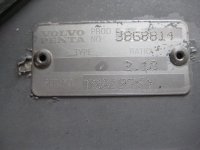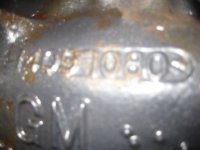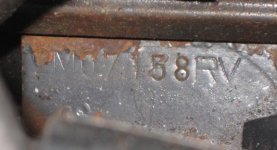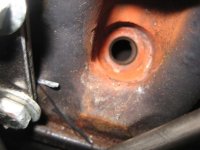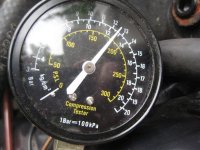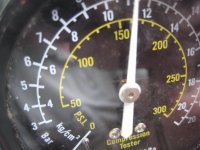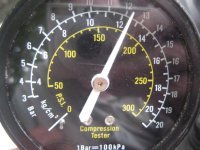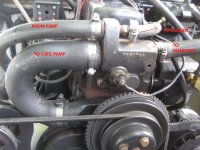This is my daughters boat - she just towed to our home and wants me to have a look at it! I know a bit about engines, but mostly sailboat diesels, outboards and cars. I have never owned a real power boat! I am a total newbie when it comes to outdrives!
What I have been able to gather:
- a few weeks before engine failed, she had a burning smell from engine, so limped back to marina. Marina replaced the water pump.
- When engine failed, there was a knocking sound coming from engine but she still was able to limp back to marina.
- Marina found water in oil. They changed the oil and restarted the engine. But soon there was water in the oil again. For some reason they also though there might be a bad piston?
Back home,
I checked the oil and it still has water in it (it is milky!)
I disconnected the ignition and turned the engine over briefly. No knocking sounds.
Likely unrelated, but found alternator belt was broken. Alternator spins.
Considering what next steps should be?
Maybe:
- remove plugs and spin engine to see if there is water in cylinders?
- Do a compression test?
- drain the oil
- what other preliminary checks?
- Maybe remove head? Can this be done in place?
I will likely need a shop manual. Found one in Spanish on-line Any free links to English versions?
Any free links to English versions?
If preliminary checks show it is more than a blown head gasket, engine would likely need to be replaced or rebuilt. Boat is OK, but not great. Any idea on cost in Canada to replace with new block? I am not equipped or at an age where I would take on the replacement.
Only sticker I have found so far on engine is on valve cover and it only lists Volvo patent numbers. I need to find serial number at least.
What I have been able to gather:
- a few weeks before engine failed, she had a burning smell from engine, so limped back to marina. Marina replaced the water pump.
- When engine failed, there was a knocking sound coming from engine but she still was able to limp back to marina.
- Marina found water in oil. They changed the oil and restarted the engine. But soon there was water in the oil again. For some reason they also though there might be a bad piston?
Back home,
I checked the oil and it still has water in it (it is milky!)
I disconnected the ignition and turned the engine over briefly. No knocking sounds.
Likely unrelated, but found alternator belt was broken. Alternator spins.
Considering what next steps should be?
Maybe:
- remove plugs and spin engine to see if there is water in cylinders?
- Do a compression test?
- drain the oil
- what other preliminary checks?
- Maybe remove head? Can this be done in place?
I will likely need a shop manual. Found one in Spanish on-line
If preliminary checks show it is more than a blown head gasket, engine would likely need to be replaced or rebuilt. Boat is OK, but not great. Any idea on cost in Canada to replace with new block? I am not equipped or at an age where I would take on the replacement.
Only sticker I have found so far on engine is on valve cover and it only lists Volvo patent numbers. I need to find serial number at least.




















